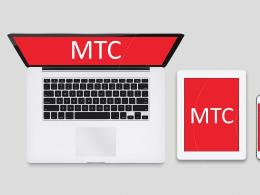No wireless network adapter windows 7. Wireless network adapter or access point problem - how to fix the problem
Not so long ago, the author of these lines encountered an unpleasant situation - one of the computers that worked fine before was connected to a router in a new location using a wired connection. Several devices regularly receive Internet from this router, but the newcomer himself refused to work, giving an error: “ Network adapter does not have valid IP settings.”
That is, a patch cord, also known as an Ethernet cable, perfectly provides the Internet with a regularly buzzing system unit, and when connected to the long-suffering system manager, the latter stubbornly ignores the connected Internet.
What is this error, and how to get rid of it - let's figure it out together.
Trying to turn it off and on
I confess right away - in my case, the good old way helped me. I just disconnected the router, and then reconnected it to electrical network and everything worked on its own. However, before I tried this miracle method, I had to thoroughly study the problem.
Therefore, first of all, try “turning off and then on again” your problem device, and also reboot the router. Well, suddenly - did it help me in the end?
You can also enable and disable the Internet connection manually. To do this, go to the "Change adapter settings" menu. You can find it in the following way:
Click right click click on the connection icon and select “Control Center..”

You can also use the following method: press on the keyboard Win + R, dial ncpa.cpl and confirm your entry with the key Enter.
In the window that opens, select your connection and click disable, and then in the same way, using the right mouse button, click enable.

We check the connection. Did not help? We move on.
Update IP address
Trying to update the IP address automatically. For this we use the command line.
Launch the command line and enter the following code:
ipconfig /release
ipconfig /renew

This method is the safest, and most likely the most useless.
Reset the TCP / IP protocol
Let's try to reset the network settings. To do this, again use the command line, and then enter the following queries:
netsh int ip reset
netsh int tcp reset
netsh winsock reset

After we restart the computer. Not that again? Let's try the following.
Trying other ways to solve the error: “The network adapter does not have valid IP settings”
- Try disabling your antivirus or third-party firewall.
- Delete Network adapter in Device Manager, and reboot. After such an execution, the drivers will be automatically reinstalled. If not, try downloading the drivers from the official website of the manufacturer.
- Remove the program Bonjour from Apple, if you have it installed - sometimes it causes a crash.
- Check if the network card is disabled in the BIOS.
I hope your problem is solved as easily and painlessly as it was in my case. Just in case, it is worth checking the health of the cable and network adapter. Try disconnecting and reconnecting the cable. Update drivers, operating system. If it doesn't work, maybe it's worth it.
Technology wireless access the Internet is gaining more and more popularity. However, despite the seeming perfection, it is quite common to encounter situations with a lack of connection, although it would seem that the network is configured correctly. In most cases, the adapter problem wireless networks or access point in Windows 7 or similar operating systems ah is connected either with the settings of routers, or with an incorrect set parameters access on a computer, laptop or mobile device. It is further proposed to consider the causes of this phenomenon and several solutions to eliminate problems corresponding to typical situations with connection errors.
Wireless adapter or access point problem - why is there no connection?
Let's start directly with the reasons. The problems that arise can be divided into two types: when there is a connection, but without access to the Internet, and when it is not available at all.
How to fix such situations will be discussed later. However, do not forget that the problem of a wireless network adapter or access point (in Windows 10, for example) may be related not so much to the equipment or connection settings as to the provider. You can find out by looking at the router. If the problem is with the ISP, light, marked with the Internet icon, will be off. And, perhaps, no matter how trite it sounds, the user simply did not enter the subscription fee, or provider in this moment doing technical work?
But what if the light is on, the provider's router is pinging, and there is no connection for connected computer terminals or mobile devices? In this case, you can offer several options for action, which usually eliminate all kinds of failures and errors. wireless connection for the most part software methods rather than physical interference with the operation of devices.
Wireless network adapter or access point problem: how to fix the problem in the easiest way?
Let's start with the most primitive solutions. To get started, just check Internet access not from the main computer, but, for example, from mobile device. If there is a connection, then the problem is in the computer. If the connection is not available on all devices, try resetting the router by completely disconnecting it from the network for 10-15 seconds and turning it back on (some users advise pausing from one to five minutes). Sometimes it may be necessary to reboot the device from which the connection is supposed to be made (meaning desktop computers or laptops, not mobile devices).

Quite often, a problem with a wireless network adapter or access point on a laptop can be fixed by checking to see if it is turned on. wifi adapter. To do this, laptops use either special switches, or assigned buttons, or combinations thereof. It may very well be that the network adapter just needs to be turned on, and after a while available networks will be defined, and the connection icon for selecting the desired network will be displayed in the system tray.
Checking your router settings
But, suppose that the Wi-Fi adapter is turned on, but the network is still missing. Here you will have to enter the router settings by entering the appropriate address indicated on the plate on the back of the router in any Internet browser, and then, using authorization in the form of a login and password, check whether Wi-Fi distribution(usually this is the Wireless section or something like that, unless the router interface is Russified).

Another option to troubleshoot a problem with a wireless network adapter or access point is to check if it is enabled in the appropriate section of the router settings. If this does not help, perform a factory reset directly in the router options (there is usually a special menu for this).

It is also advisable to check a similar service in Windows using the services.msc command in the Run console to access it. If the service is not active, it should be enabled and the startup type set to automatic.
Change connection type
In some cases, even after resetting the settings, the problem with the wireless adapter or access point is not resolved. In this case, use the router settings again, and enter the values \u200b\u200bin 5, 6 or 11 in the line of the established channel.

You can also try in the section wireless connection change connection type to mixed (b/g/n).
Driver Issues
A problem with a wireless network adapter or access point may be due to the fact that the device drivers are outdated or crashed.

Enter the "Task Manager", find the device you are looking for and use the driver update item from the RMB menu or when going to the properties on the driver tab. If this does not work, completely remove the Wi-Fi adapter from the system, then reinstall the drivers. You should not rely on Windows, because the system, after removing the driver or during a reboot, will still offer to install the most suitable software from its own database, and for some non-standard devices it may not be in the catalog. It is better to use the original driver disk, if available, or install the control software using programs like DriverPack Solution.
Checking TCP/IP protocol settings
Finally, another solution to the question of how to fix the problem of a wireless network adapter or access point is to check the IPv4 protocol settings in the properties of the connection you are using.

All parameters must be set to receive addresses automatically. If this is the case, but the network still does not work, you can use manually set DNS server addresses. As the best option, many advise introducing free Google combinations, which are sequences of fours and eights (less often, sevens).
Please note that in some cases, when the sixth version of the protocol is also activated along with the fourth version, it must be completely disabled (it is quite possible that the provider does not use the sixth version of the DHCP server, and the active IPv6 protocol causes conflicts in the system).
Using Utilities to Troubleshoot Network Errors
Some users advise using various testing programs to troubleshoot connection problems. One of the most interesting (albeit in the English version) is the NetAdapter Repair utility, which is a kind of automated tool for fixing failures according to the way, for example, the search service works. Windows Troubleshooting or the same FixIt utility.

Simply launch the application, mark the necessary tests from the menu on the left and run the test (Run all selected). You can also use the alternative troubleshooting with advanced settings (Advanced Repair) to fix the identified problems.
What else could there be?
Only the most common problems and the main methods for their elimination have been described above. But sometimes more serious situations can occur. In some cases, you may need to delete an existing connection and create a similar one again.
The most difficult case, many experts call the situation when only the Power indicator (Power) is lit on the router when it is turned on. This already indicates a malfunction in the equipment itself.
It also happens that the Wi-Fi indicator does not light up. On some models of routers, you need to check if there is a distribution enable button on the rear panel (it is, as it were, recessed into the case). Sometimes you may need to update your router firmware. Perhaps the problem is that the connection cable is broken. To find out, connect the cable to your PC or laptop directly and check the connection. Finally, contact your ISP and find out if and which static IP can be used. If it is provided, register it in the IPv4 settings.
However, in most situations, if the problems are not related to broken routers or are not related to the provider providing Internet access services, the above methods usually fix the problems. True, it will not be immediately possible to say what exactly caused the failure, so you will have to act, to put it mildly, at random, although you can perform all the actions in the order in which they were described above.
Windows 7 supports the vast majority of network cards. Moreover, most modern network equipment is sharpened specifically for Windows, with all the ensuing problems, because Windows is not famous for its stability. However, Microsoft promptly solves most of the problems that arise with network equipment, honor and praise to them, but those that inevitably arise will be analyzed in detail in this article.
First of all: in order to expand the potential range of tasks that a client computer performs on a network, it is necessary to change the basic parameters network card.
Here are examples of such tasks:
How to see a list of available network adapters (network connections) in Windows 7?
The list of available devices on Windows 7 can be seen in two ways:

The second method starts by opening the "Device Manager" using the "Run" window:

Enabling the network card, including using the BIOS
Read instructions for everyone BIOS versions in the article -
On laptops, turning the network interface on and off is done by pressing a keyboard shortcut, on desktop computers, through the BIOS menu.

To enable the wireless network adapter on laptops, there is a Fn + F12 combination, although some manufacturers make a special key for this function.

Installing a network driver on Windows 7, including without the Internet
Since the network adapter is equivalent to the Internet, its absence makes it very difficult to download the driver for the network card. The issue is resolved by pre-recording drivers on media.
- Drivers are downloaded and written to a flash drive, CD, etc.
- The media is connected to the PC.
- After that, the "Device Manager" opens, using the "Run" window (called by pressing the "Win + R" keys), in which the "devmgmt.msc" command is entered.

- There is a section "Sound, game and video devices", subsection "Unknown device", which is not yet installed. You need to start installing drivers for an unknown device (future network adapter) after selecting it with the right mouse button and selecting it in the "Properties" drop-down menu.

- Click the left mouse button - "Update".

- Manual setting is selected.

- The path to the driver media is written or indicated.

- Finally, the installation begins. It takes no more than a couple of minutes.
The network card without drivers in the "Device Manager" was in the "Unknown Devices" section. After the update, it takes its rightful place - in the "Network Adapters".

Video - How to install a network adapter driver without access to the Internet
Setting up a network connection in Windows 7
Although Internet service providers prefer to configure their own network hardware customers, sometimes you have to do more advanced configuration. This is typical for computers with multiple adapters.
For this:
- Come in context menu Start, open Control Panel.

- In the "View" category, set the value to "Category", find and open the "Network and Internet" section.

- Click on the "Network and Sharing Center" link.

- Click on the "Change adapter settings" link.

- Right-click on the network connection shortcut, select "Properties".

- Check the box "Internet Protocol Version 4 (TCP/IPv4)", click on the "Properties" button.

- Check the box "Use the following IP address", fill in the fields with data.

On a note! The fields and "Main gateway" are in the agreement with the Internet provider, the remaining fields contain the same values for all users.
Video - The computer does not see the network adapter
How to view and change network card settings (IP, Mac, and more) in Windows 7?

It is easy to see the adapter parameters and its MAC address thanks to system programs.
For this:

How to reset all network driver settings?
If you want to completely roll back all settings to their original level, then do the following:


Is it possible to create two network cards?
Many users are thinking about getting a second network card. Physically, there are no problems here: most laptops and computers support a second network card. But there are exceptions, as well as damaged slots, as well as netbooks and tablet computers. In this situation, you need to use a virtual board that distributes Internet traffic no worse than a physical one.
The ability to install such a virtual card is in the Windows system itself:
- In the "Start" menu, type "manager" in the field, open "Device Manager".

- In the "Device Manager" click on the "Network adapters" section, select "Actions" in the top menu, and from the drop-down menu - "Install an old device".

- The installation wizard will open. You need to select the manual option to access the list of drivers for all devices.

- Scroll through the categories, select "Network adapters", click "Next".

- Then click on the "Micrsoft" item, add "Micrsoft loopback adapter" or "Microsoft Loopback Adapter", which will then appear in the network connections window.


- Confirm. The network adapter should now appear in Network Connections.


Complete reset of network drivers
If your Internet is down or most of the Internet pages are not opening, then resetting all parameters and the TCP / IP stack can be an excellent solution to this problem.

Disable network card
To disable the network adapter, the most the best remedy- it's just to use the most standard and convenient Windows tool to contain all such hardware is the device manager. Do the following:

In this case, the shutdown will occur immediately, it will not even be necessary to reboot the OS.
Important! After the adapter is disconnected, the Internet connection will be cut off along with it and there will be a disconnection from local network. Therefore, it is recommended to finish all your business on the Internet in a timely manner before turning off the network card.
The network adapter does not have valid IP settings
A common problem with Windows users 7 - this is when there are problems accessing the Internet and the network diagnostic tool displays a message stating that the network adapter does not have valid IP settings.

In this case, you can first try to reset the router. If you have wired connection, then disable and then re-enable your network-connection in the network connections menu. If this does not help, then you can proceed to the next steps.
Step 1. Renew your IP address - this is the easiest method, although not always helpful in this case. To do this, open command line” (as administrator) and enter the following commands:

Check again if the error is still displayed? If yes, then let's move on.
Step 2 You can try to reset the network settings, namely the IP protocols. The TCP / IP protocol stack is recommended to be reset to factory settings in the most acute cases, when problems arise as a result of actions malware etc. To do this, open a command prompt in administrator mode and type:

Network card settings crash
When setting up a network, users may encounter the following situation: when the IP address, gateway, DNS are manually entered - the prescribed parameters are not saved, but reset to factory settings, and thus it becomes impossible to change network settings from automatic receipt addresses from the router. One of the common reasons for this is the incorrect removal of an antivirus that has firewall functions.

What should be done:
- Reset the TCP/IP protocol stack to factory settings (see how to do this earlier in the article).
- Reboot.
If this does not help, then do the following:

After that, the problem should be resolved.
What to do if there are problems with the network card?
Many plug-in network adapters, due to their vulnerability to electricity, can fail for a while during periods of severe thunderstorms, or power outages in a building. In most cases, difficulties appear in situations with wired equipment, since multi-storey buildings have long cable routes laid by Internet providers in places not quite intended for this, next to telephone and television cables and high voltage wires. High humidity, dampness and low temperature in this area - all this has an extremely negative effect on the insulation of wires, so breakdowns appear in them. .

Sometimes also, in more rare cases, breakdowns occur due to emergencies such as a major thunderstorm. Network adapters often burn out, or users begin to experience difficulty logging into the network. In this case, the equipment will function, but there may be no connection to the Internet during such periods.
Unfortunately, this problem solved only by buying another model of network adapter. For a desktop computer, it complies with the PCI standard, for a laptop - USB and PCMCIA.

It is also not recommended to include network cable into the router, and then connect a computer to it, because even if the router breaks down, its replacement will cost relatively inexpensively, compared to replacing the network card built into the computer (or even the entire motherboard).
Windows 7 does not see network adapter

When the integrated network equipment is not shown in either the Network Connections window or the Device Manager, and is not even reflected in the Unknown Devices section (which would be due to the lack of drivers), then something is most likely wrong with it physically. It is quite possible that some transistors burned out on the network card board, or a chip flew off - in this case it is more expedient to buy a new card.
Video - How to set up a wired network card on Windows 7
An Ethernet network adapter with invalid IP settings is one of the common problems when connecting a computer, desktop or laptop, to the Internet and local network. This error occurs in the seventh, and in the eighth, and in the updated, tenth, Windows versions. And it is determined after running third-party network utilities or a diagnostic tool preinstalled in the system. The main reason for this failure is incorrect set parameters network adapter. But there are a number of other points as well. So, let's dwell on them in more detail.
Windows network settings
Each NIC is assigned its own IP address. And the first thing we'll do is check it out. Open the "Network and Access Center" by clicking on the "monitor" icon. Select "Change adapter settings" to go to "Local Area Connection". Click on the icon and open "Status" and then "Details".
In a new window that opens, there is all the data about your network connection. We need "IPv4 protocol". The value must be written in it and there must be no address of such a plan: 169.252.X.X. If the field is empty or such addresses are registered, you will not be able to connect to the Internet. Also cannot be empty if you are connecting to the WAN through a router, the fields for "Default Gateway" and "DNS Server". They must contain values.
Empty fields indicate a failure of the DHCP server. Let's try to fix everything manually. Click on the "Network Connections" icon and select "Properties". On this tab, we need "Internet Protocol Version 4 (TCP/IPv4)". It is in this field that we will set the value of the IP address:

What do we write? If you are using a router, look at the bottom panel for its IP address. The value for the netmask will be 255.255.255.0. This is the case if you are connecting via a router. If the cable is connected directly, call your service provider - only he can fix the error with invalid network adapter parameters.
Routing, DNS cache and WInsock
So let's remove the routes first. network information, that is, clean up the table.In Start, select Command Prompt and launch the console as Administrator by clicking on the appropriate menu item. We write the following commands in the text interface one by one and press Enter to execute:
The routing table is cleared like this:
route -f
The cache of the DNS Client service is cleared like this:
ipconfig /flushdns
TCP/IP protocol settings are reset as follows:
netsh int ip reset
netsh int ipv4 reset
netsh int tcp reset
Windows Sockets settings reset like this:
netsh winsock reset
close command console, press restart laptop/computer and check the status of the Internet connection.
Network adapter driver
The new edition of Windows brought with it a whole bunch of problems with connecting both over Ethernet and over the air. And the root cause of these problems is incompatible or unstable drivers for network cards. If the utility diagnosed the error "invalid IP parameters in the network adapter", the first thing you should do is make sure that the driver is available. However, if you updated the software, the driver was not installed manually, but by the system itself. But it doesn't work, so delete this one and install a new one.Where to looking for? Only on the manufacturer's website and only by adapter or laptop model. Type in search and download setup file or archive on a computer. Run the .EXE file and wait for the driver to finish installing. If the manufacturer has not yet released a driver for the "tens", download it for Windows 8.
PC security system - antivirus, firewall
If you installed another antivirus program or configured the firewall in a new way, this may be the cause of the Internet connection error. You can also use free antivirus software that conflicts with your network card, or a firewall that zealously protects your computer from network threats. In any case, disable antiviruses, firewalls, including the pre-installed firewall. It is desirable to suspend the work of the latter in the first place. To do this, press the Win + R key set and in the window that opens in the left corner write firewall.cpl. Another window will open with two links. Select the appropriate link to disable:
Disable private and common network. Close the window and start the Internet.
Clean Boot Windows
And finally, let's try the clean boot OS option to eliminate conflicts network board co third party programs, applications, services. Type Win + R and in the window that opens, copy the command: msconfigIf you click OK, a window with "System Configuration" will open. Open the "General" tab and select the "Selective startup" item on it, marking it with a checkbox, as in the picture:

Just below there is another item marked with a flag. To perform a clean boot software MS, we need to undo the "load startup items" clause. Then go to the "Services" tab:

If you don't want to see only Microsoft services, check the box next to it and click Disable All. Save the new settings and be sure to restart the laptop / computer. Check your Internet connection. Most likely, the problem with the IP settings for the network card should be resolved. Well, if nothing helped, you need to connect the adapter to another device. It is possible that the matter is in the laptop, and not in the network card.






